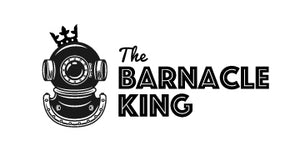How Barnacle Growth Impacts Yacht Performance
Owning a yacht is a dream come true for many, offering the freedom to explore the open waters and enjoy the luxurious lifestyle that comes with it. However, this dream comes with responsibilities. One of the most common and insidious threats to your yacht’s efficiency is barnacle growth. In this blog, we’ll get into the science of barnacle growth, how it impacts your yacht’s performance, and the best practices for preventing and removing these stubborn sea creatures.
The Science of Barnacle Growth
Barnacles are small, hard-shelled marine organisms that attach themselves to various surfaces, including the hull of your yacht. They begin their life as free-swimming larvae, but once they find a suitable surface, they settle down and secrete a glue-like substance that firmly attaches them to the hull. As they mature, barnacles build hard calcium carbonate shells around themselves, forming colonies that can cover large areas of your boat’s hull if left unchecked.
The growth of barnacles is driven by several factors, including water temperature, salinity, and the availability of nutrients in the water. Warmer waters, such as those in tropical and subtropical regions, are particularly conducive to barnacle growth, making them a common problem for yachts in these areas.
How Barnacle Growth Affects Your Yacht’s Performance
The presence of barnacles on your yacht’s hull may seem harmless at first, but these tiny organisms can have a significant impact on your vessel’s performance. Here’s how:
-
Increased Drag: Barnacles create a rough surface on the hull, which increases hydrodynamic drag as your yacht moves through the water. This means your yacht has to work harder to maintain its speed, leading to reduced fuel efficiency and higher operating costs.
-
Reduced Speed: The added drag caused by barnacle growth can reduce your yacht’s top speed, making it less responsive and sluggish in the water. This can be particularly frustrating for those who enjoy high-speed cruising or competitive sailing.
-
Damage to Hull Paint: Barnacles adhere strongly to the hull and can cause significant damage to the paint or protective coatings when they are removed. This can lead to costly repairs and repainting, as well as potential damage to the underlying structure of the hull if the growth is extensive.
-
Impaired Maneuverability: In addition to slowing your yacht down, barnacles can also affect its maneuverability, making it harder to turn, accelerate, or decelerate. This can be a serious safety concern, especially in challenging sailing conditions.
-
Increased Maintenance Costs: The longer barnacles are allowed to grow on your hull, the harder they are to remove. Regular maintenance is required to prevent barnacle growth, and neglecting this can lead to expensive and time-consuming cleaning processes.
Preventing and Removing Barnacle Growth
Preventing barnacle growth is essential for maintaining your yacht’s performance and reducing long-term maintenance costs. Here are some best practices for keeping your hull barnacle-free:
-
Regular Hull Cleaning: Regularly cleaning your yacht’s hull is one of the most effective ways to prevent barnacle growth. Professional hull cleaning services, like those offered by Barnacle King, ensure that your hull remains smooth and free of marine growth, minimizing drag and protecting your yacht’s paint.
-
Use of Antifouling Paint: Applying antifouling paint to your yacht’s hull is a proactive way to prevent barnacles and other marine organisms from attaching. This specialized paint contains biocides that discourage barnacle larvae from settling on the surface. It’s important to choose the right type of antifouling paint based on your yacht’s usage and the waters you typically navigate.
-
Regular Inspections: Conduct regular inspections of your hull, especially after long periods of inactivity or after returning from trips in warm, barnacle-prone waters. Early detection of barnacle growth allows for prompt removal before the problem becomes severe.
-
Cavitation Cleaning: Cavitation cleaning is an advanced method that uses sound waves to create microscopic bubbles that safely remove barnacles and other marine growth from your hull. This method is both effective and gentle, ensuring that your hull remains in excellent condition without the risk of damage.
-
Dry Docking: Periodically dry docking your yacht allows for thorough inspections and maintenance, including the removal of barnacles and the reapplication of antifouling paint. Dry docking is particularly useful for larger yachts that require more extensive maintenance.
Barnacle growth is more than just an aesthetic issue—it can significantly impact your yacht’s performance, fuel efficiency, and overall safety. By understanding the science behind barnacle growth and implementing regular maintenance practices, you can protect your investment and enjoy smoother, faster, and more efficient sailing. At Barnacle King, we specialize in keeping your yacht’s hull in great condition, so you can focus on enjoying the water without worry. From professional hull cleaning to antifouling services and expert advice, we're here to keep your yacht in top condition.
